Check out my custom vibration dampener
Wilson Blade 98 18×20 v8
Review & Playtest
We hope you love this article. Just so you know, TennisCompanion may collect a small share of sales from the links on this page to help keep this site running. Learn more. Disclosure: Wilson gave me this frame to evaluate, but they did not pay me to write this review or influence its contents.
Fifteen years after releasing the original Blade, Wilson unveiled the eighth generation of the ever-popular racquet franchise in 2021, featuring a slick new chameleon paint job and a handful of refinements.
One of the most anticipated frames in the lineup is the Wilson Blade 98 18×20 v8, a formidable tennis racquet geared toward intermediate to advanced tennis players and well-known for its exceptional precision and control, excellent feel, and arm-friendly comfort.
However, despite the racquet’s rock-solid performance, it’s not ideal for everyone, so it pays to know what you’re getting into before taking the plunge and buying it. To help, I’m sharing my candid thoughts on its design and ideal string setup, along with its on-court performance and upgrade advice so you can decide if it’s a good fit.
| Wilson Blade Models |
| Wilson Blade 98 v8 16×19 |
| Wilson Blade 98 v8 18×20 |
| Wilson Blade 100 v8 |
| Wilson Blade 100 L v8 |
| Wilson Blade 100 UL v8 |
| Wilson Blade SW102 Autograph |
| Wilson Blade 104 v8 |
Article Contents
Click below to jump to a section
Tap below to jump to a section
Design
Strings & Tension
Performance & Ratings
Groundstrokes
Volleys
Serves
Returns
Summary
Upgrade Advice
New to TennisCompanion?
Create a free account and explore my latest videos below
Design

Despite the clean and modern aesthetic of the Blade’s prior model, I’m happy that Wilson opted for a completely refreshed look for the eighth generation, which is a fun update that looks and feels great.
As you might remember, the previous generation’s design had a look and feel consistent with the rest of Wilson’s best-selling performance racquets, each with a pop of color at the top of the hoop that helped players easily distinguish one from the other.

Although I liked the look, it was starting to feel a bit dated, so I love how Wilson thought outside of the box with this paint job, drastically changing the racquet’s appearance while sticking with the original theme.

Undoubtedly, green is the frame’s dominant color, but it’s dynamic. As you spin or rotate the racquet, light causes the paint to shift between green and copper for a unique and distinct style that looks fantastic.
Up close, the paint has a mild gloss finish with a subtle glimmer, while matte black lettering contrasts against the color-shifting cosmetic. From a feel standpoint, the racquet is smooth to the touch, not rubbery, as you’d find with other Wilson models like the Clash.

The racquet’s head features matte black at the top with the words’ FortyFive’ printed on the inside edge of the hoop. On one side of the racquet’s head on the inside edge, you’ll find some of the racquet’s specs, including weight, tension, balance, string pattern, and head size printed. Surprisingly, they left out the stiffness index, but I appreciate that they include the spec, which is helpful as racquets change hands.
On the throat’s outside, you’ll find Wilson and Blade logos, the model racquet, and its string pattern and weight. Then, inside the throat, there’s a Wilson and grip size sticker and info on where the racquet is designed (Chicago, IL, USA) and manufactured (China).

The racquet’s handle features a Wilson Pro Performance replacement grip, and at the bottom of the handle, there’s a red butt cap with Wilson’s logo. They don’t print the grip size on the butt cap, but if you pop it off, you’ll find it printed on the inside.

Overall, the Wilson Blade 98 18×20 v8’s design is a solid upgrade from the previous generation, which looks great, and I expect it to be popular with existing users and newcomers alike.
Strings & Tension
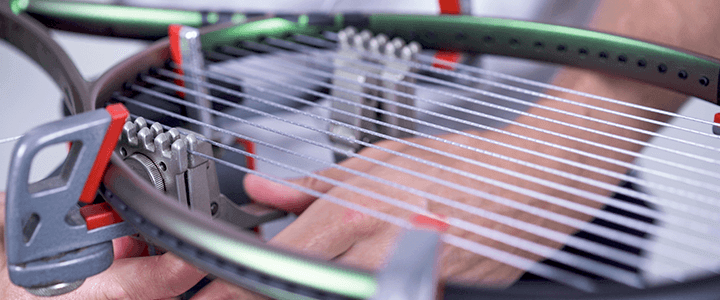
For my playtest of the Wilson Blade 98 18×20 v8, I strung the racquet with 1.25 mm Luxilon ALU Power Rough at 52 lbs or 23.6 kg. Wilson recommends a tension of 50 – 60 lbs (23 – 27 kg) for context.

If you’re unfamiliar, Luxilon Alu Power Rough is a low-powered polyester that offers excellent precision, spin, and feel, which pairs nicely with the Blade, especially for those looking to maximize control.
I specifically opted for the Rough version of Alu Power because I wanted to maximize grip with the tighter 18×20 string pattern.
Generally speaking, polyester strings are going great option that aligns well with the racquet’s performance characteristics. However, if you’re coming to this racquet for its comfort, I’d recommend you stay away from a full bed of poly which will reduce comfort.
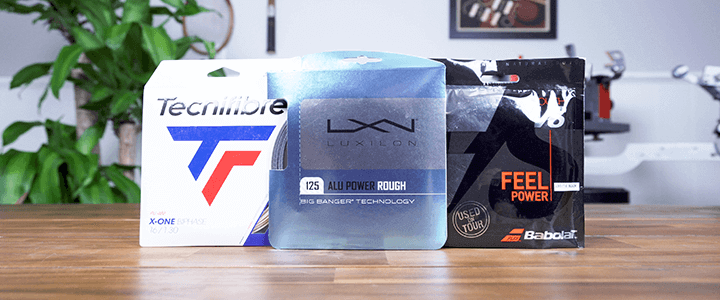
Instead, I’d encourage you to explore a hybrid string setup that combines a multifilament or natural gut in the mains with polyester in the crosses. Alternatively, a control-oriented multifilament would help you retain even more comfort, which would work well for this model racquet.
Performance & Ratings

One of the first places to look when it comes to a racquet’s performance is its specs, which can provide a glimpse into what to expect.
However, as helpful as this data can be, it only tells part of the story. Materials, construction methods, strings, and tension significantly influence a racquet’s feel, which is why I playtest racquets.
Below I’ve provided some high-level background information about this review. You can read my tennis bio if you’d like to learn more about me.
| Main Strings | Luxilon ALU Power Rough (1.25 mm) |
| Cross Strings | Luxilon ALU Power Rough (1.25 mm) |
| Mains Tension | 52 lbs / 23.6 kg |
| Crosses Tension | 52 lbs / 23.6 kg |
| Forehand Grip | Semi-Western |
| Backhand | Two-handed |
| Grip Size | #3 – 4 3/8 |
| Grip | Wilson Pro Performance |
| Overgrip | Wilson Pro |
| Weight | 165 lbs / 74.84 kg |
| Height | 6’0″ / 1.83m |
To provide you with the most objective review possible, I’ve rated the Wilson Blade 98 18×20 v8 across twelve performance criteria.
It’s the same rating system I use for all my racquet reviews, so you can use them as a basis for comparison.
In the following sections, I provide additional details on the above ratings organized by groundstrokes, volleys, serves, and returns. After, I’ll summarize my findings on the racquet’s performance.
Groundstrokes
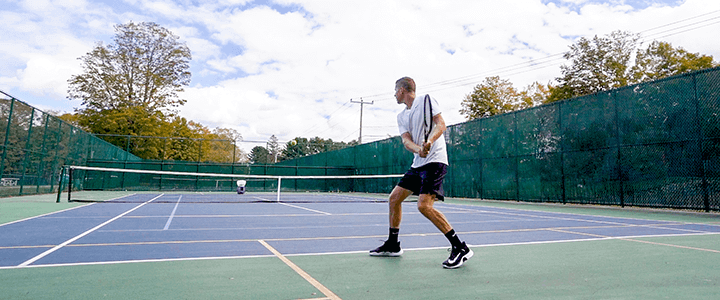
Hitting groundstrokes, the Wilson Blade offered excellent all-around performance with a strong emphasis on control, influenced heavily by the racquet’s smaller 98 sq in head size and closed string pattern.
I especially enjoyed the frame’s lower power and predictable response, which gave me the confidence to swing freely while maintaining accuracy.
The tighter 18×20 string pattern offers a stiffer response than its 16×19 counterpart. However, it carries the added benefit of naturally lowering the trajectory of my forehand to deliver flatter, more penetrating shots.
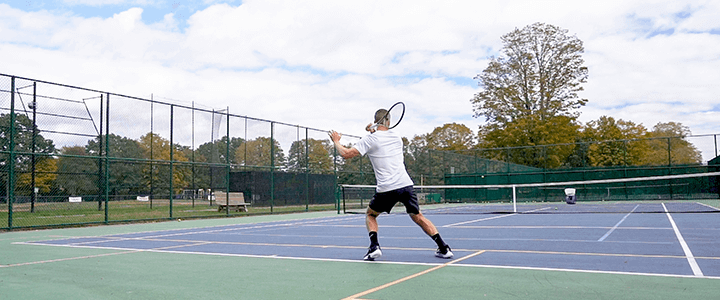
On the other hand, the frame’s string pattern isn’t as spin-friendly, so proper technique and adequate racquet head speed are required to get the most out of this racquet in this department.
One of my favorite parts about the racquet off the ground is its weight, which cuts easily through a heavy ball while maintaining stability. As a result, it’s fantastic taking the air out of the ball when hitting slice.
It also delivers excellent comfort with an RA or stiffness rating of only 60, an impressive score that falls on the lower end of the spectrum.
Volleys

Overall, the Wilson Blade 98 18×20 held up very well at the net.
It’s not the lightest or quickest to maneuver hitting volleys, but if you’re comfortable with the weight and early in your preparation, the Blade will reward you with excellent stability and precise striking.

Despite the racquet’s lower power, I found it to be plenty lively, with the ability to put away the ball confidently.
From a feel standpoint, the racquet delivered an above-average performance that instilled added confidence in finessing the ball and one of the areas I had a lot of fun playing with the racquet.
Serves
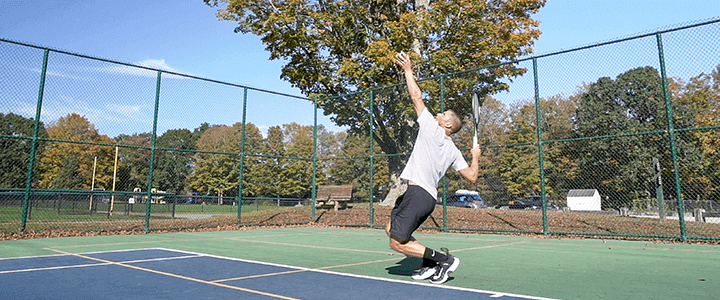
On serve, the Blade was a solid performer.
It shines in delivering accurate placement, and although it’s a bit more demanding when it comes to hitting a bigger serve, it’s not entirely void of power, either. In other words, I didn’t find the racquet to be underpowered on serve because its weight helps deliver an added punch.
For strong intermediate to advanced players, the Blade 98 18×20 strikes the right balance between accuracy and a resilient enough response to add pace, especially when backed by sound technique.
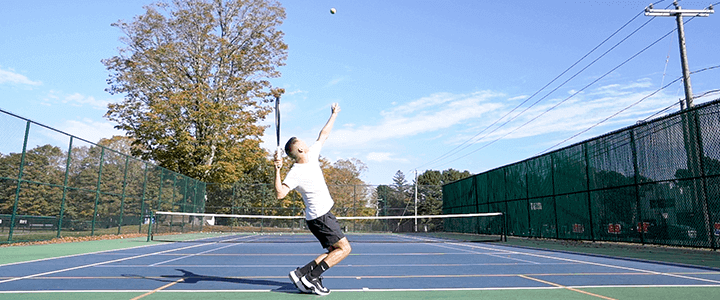
Hitting kick or slice serves, the racquet’s tighter string pattern didn’t offer much bite, so it required extra focus to get the movement I was looking for, but all-in-all, it performed well. For this reason, using Luxilon ALU Power Rough is a good match.
From a placement standpoint, the racquet performed very well. Overall, it helped me to reliably and consistently hit my spots, which is ideal for players who tend to lean towards accuracy in their serving over power.
Returns

Finally, hitting returns, I really enjoyed the Blade 98 18×20 v8.
Although its weight demands well-timed preparation and positioning, it rewards players with rock-solid stability that can easily handle the extra pace an opponent might send your way on serve.
Combined with the Blade’s overall emphasis on control, the racquet helps deliver accurate and deep replies without worrying much about overhitting. It’s also an excellent frame for blocking back a big serve or hitting returns with slice to change up the pace.
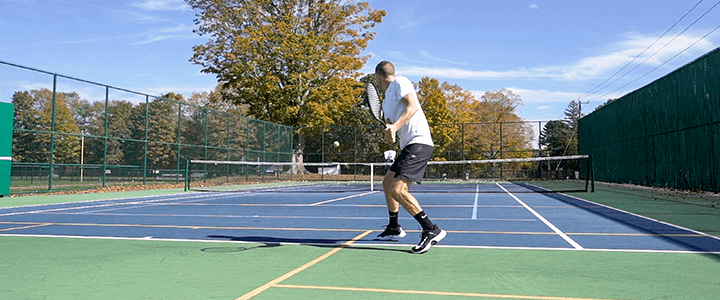
At times, I would have loved for the racquet to provide a bit more free topspin to add extra margin for error on my returns, so that’s an area that would require some adjustment for me long term.
However, the Wilson Blade 98 18×20 delivered a solid performance hitting returns for the most part.
Summary
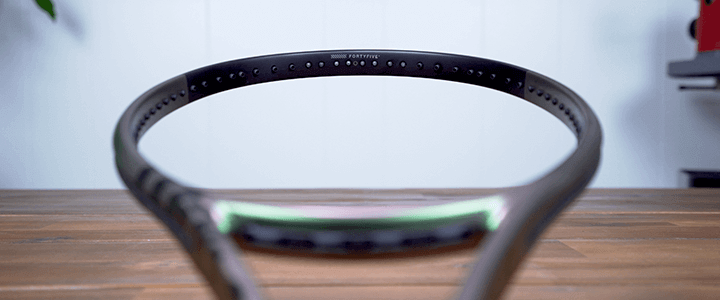
Overall, I’m a big fan of the update to the Blade 98 18×20 v8.
Rather than break the mold of what we’ve come to expect from this frame, Wilson fine-tunes the racquet, which I found largely improves performance across the board except for a slight reduction in maneuverability compared to the seventh generation.
From my experience, the Blade 98 18×20 is ideal for strong intermediate to advanced players looking for maximum control and precision in the Blade lineup, along with excellent comfort.
On the other hand, this racquet isn’t ideal for beginners, early intermediates, and those looking for an easier-to-manage racquet that enhances spin and power. If that’s the type of frame you’re looking for, check out the Wilson Blade 104 v8.
Upgrade Advice

If you own the seventh-generation Wilson Blade 98 18×20 and your racquets are in excellent condition, I’d be hard-pressed to provide you with a compelling argument to spend the money to upgrade.
Here’s what the spec changes look like on paper – nothing to write home about unless a bit of added flex or comfort is a top priority.
| Spec | Blade 98 16×18 v8 | Blade 98 18×20 v8 |
| Head Size | 98 in² / 632 cm² | 98 in² / 632 cm² |
| Length | 27 in / 69 cm | 27 in / 69 cm |
| Strung Weight | 11.3 oz / 320 g | 11.4 oz / 323 g |
| Balance | 32.64 cm / 5 pts HL | 33.02 cm / 4 pts HL |
| Swingweight | 317 | 327 |
| Stiffness | 61 | 60 |
| Beam Width | 21mm / 21mm / 21mm | 21mm / 21mm / 21mm |
| String Pattern | 16 Mains / 19 Crosses | 18 Mains / 20 Crosses |
| String Tension | 50 – 60 pounds | 50 – 60 pounds |
From a construction and materials standpoint, the only noteworthy change to the racquet is Wilson’s DirectConnect handle, which fuses the butt cap with the handle’s carbon fiber for a bit of extra stability.
Although the racquet has some slight modifications, the spec and construction changes are minor, so in most cases, you’ll be better off sticking with your current frames for the time being.
However, if your current frames have a lot of wear and tear and you’re looking for a refresh, you should feel confident in upgrading. Overall, the eighth generation is as good as the seventh and eeks out some slight improvements, so it’s not a change to shy away from if necessary.
Another angle to consider is the updated cosmetic. Although it has zero impact on performance, it’s pretty slick looking, so if you dig it and don’t mind spending the money, then all the power to you.
If you own a Blade older than the seventh generation, this release presents an excellent upgrade opportunity because these last two releases are some of my favorites in recent years.
Of course, regardless of where you stand, I’d encourage you to experience the racquet through one of the many demo programs available to players through local pro shops and online retailers. At the very least, I hope my guidance and notes in this review prove helpful in deciding whether a demo is worth your time and energy.
Wrapping Up

As one of the game’s most popular racquets, I’m happy to see that the eighth-generation 2021 Wilson Blade 98 18×20 lives up to the high standards players have come to expect from the frame.
Although it’s not for everyone, the racquet finds a sweet spot with experienced intermediate to advanced players looking for excellent control and stability. If you’re part of that crowd and considering giving the racquet a try, I think you’ll be pleasantly surprised.
Have you tried the Wilson Blade 98 18×20 v8? If so, what’s your take? I’d love to hear from you in the comments below.
Play Better Tennis
Improve your game alongside our community of tennis players
Why join?
Discussion Boards
Join the conversation with other members of the community.
5 Point Friday
Read our weekly recap of the 5 most interesting things we dig up in tennis.



Leave a Reply
Want to join the discussion?Feel free to contribute!